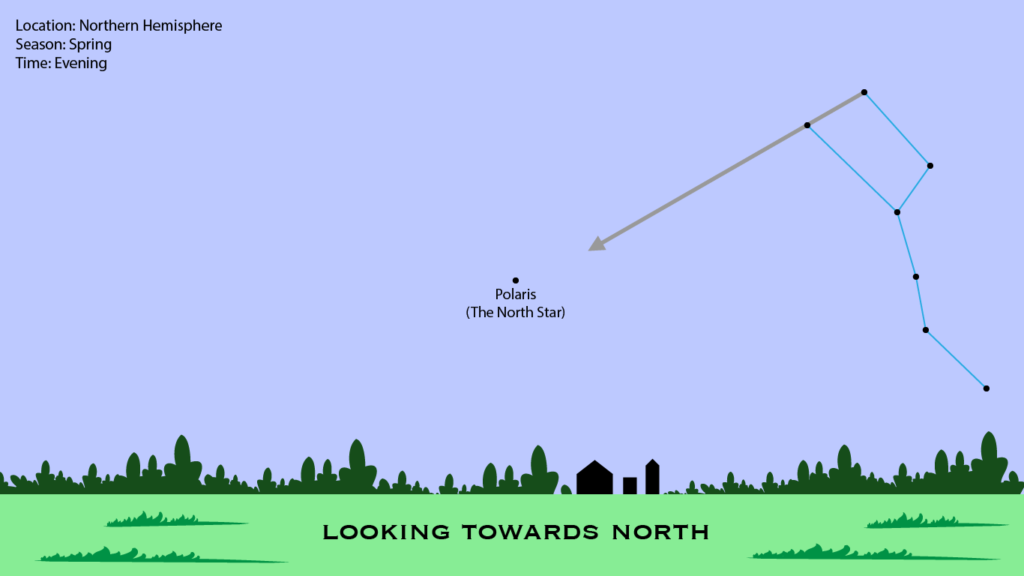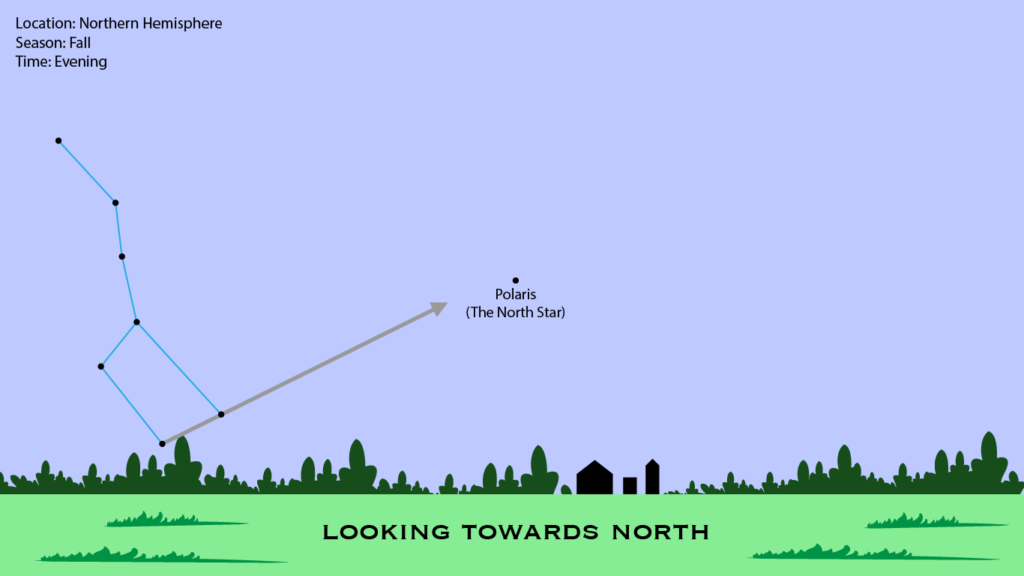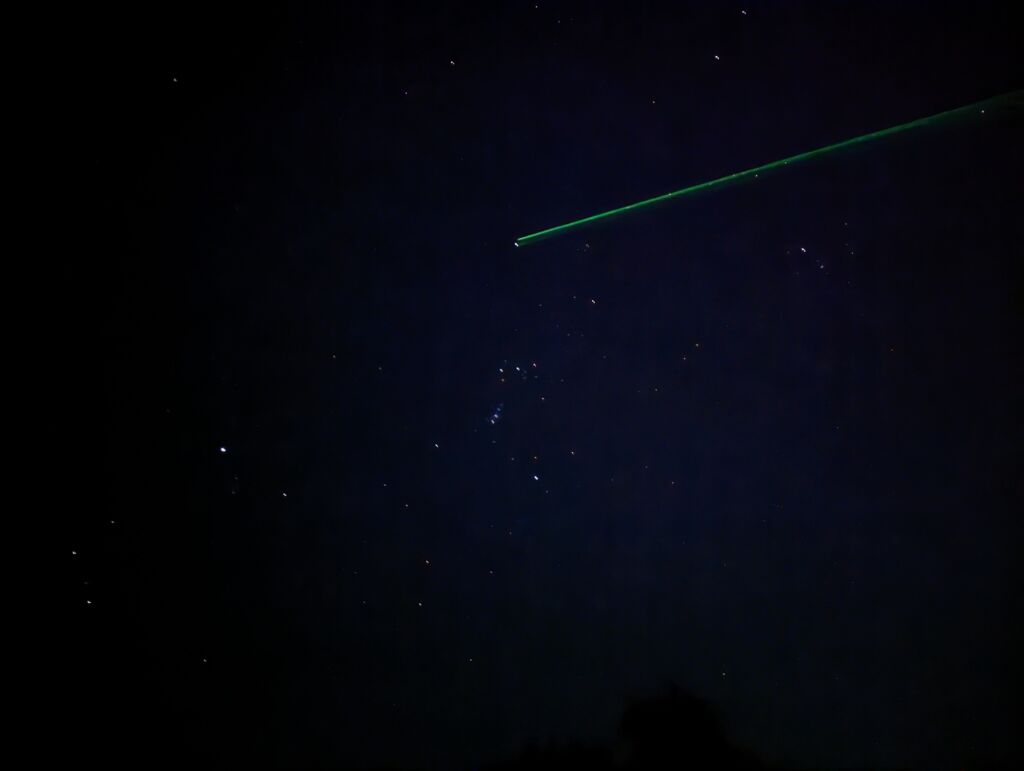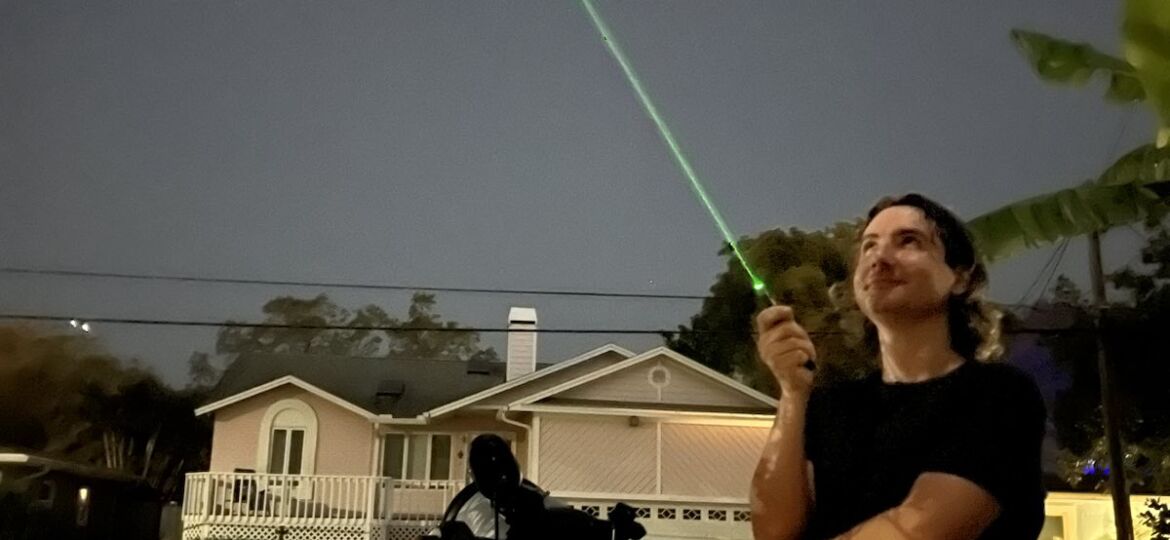Astronomy is truly a fascinating subject, and it’s one of the main reasons I became a teacher. I started with almost zero knowledge of the sky. The more I learned, the more I felt inspired to share my knowledge with others. That’s why I’m excited to continue sharing simple and informative activities that anyone can do, even without a fancy telescope. Whether you’re a homeschooling parent or just looking for fun ways to engage with your family, stargazing and exploring the mysteries of the universe is a fantastic way to do it.
One easy and unforgettable lesson to try is finding Polaris, the North Star, using the Big Dipper as a pointer. To do this, first locate the Big Dipper, which is a group of seven stars that resemble a ladle. Next, find the two stars at the front of the Dipper and imagine a line connecting them. Extend this line out about five times its length, and you’ll reach Polaris, the North Star. Polaris appears in the same place throughout the night and all year long, making it the most important star for navigation. The direction of Polaris is always north.


To make this activity even more fun and engaging, try using a 5-milliwatt green laser pointer to point out stars, planets, and constellations. The green laser beam is highly visible and can be used to point out specific celestial objects in the night sky. With the laser pointer, you can trace the constellations, point out planets like Mars and Venus, and identify individual stars while learning how to navigate the sky. Important Safety Reminder: Always exercise caution when using a laser. Avoid directing the beam at aircraft, vehicles, individuals, or animals, as it can cause harm when entering the eye and is unlawful when aimed at planes or used to distract drivers. As a prerequisite for using the laser, students must pledge to only target the sky, ensuring they refrain from pointing it at any objects or living beings on the ground.

So get yourself a green laser and stay tuned for more astronomy-related articles and activities that are sure to spark your curiosity and inspire your imagination!
For your convenience, here is a link to some green lasers on Amazon: https://www.amazon.com/s?k=green+laser+pointer


